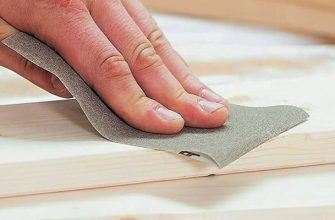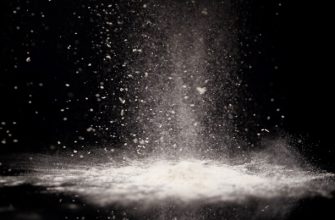Spackling compound or paste is a type of substance made up of binders and gypsum powder. It is typically used to repair or fill in gaps and smooth out the texture of drywall. It looks like a slightly off-white icing or toothpaste brand.
You could easily apply it by scooping some of it out using a putty knife and then spreading it into cracks, gaps, holes, and other areas of drywall or sheetrock that require a perfectly smooth finish. After the spackling compound has dried, sandpaper can be used to flatten it out.
- Can you Rehydrate Dried Spackles?
- How do you Rehydrate Dried Spackles?
- Method – 1:
- Method – 2:
- Method – 3:
- Is it possible to soften spackle with water?
- How long does spackling take to dry?
- Is the spackle supposed to be dry?
- What is the purpose of the spackle dry time?
- When it comes to spackle, how can you determine if it’s dry?
- Is it possible to paint over a wet spackle?
- Is it necessary to prime spackle?
- How to sand spackle in a smooth manner?
- What is the distinction between joint compound and spackle?
- Is it possible to rehydrate joint compounds?
- When it comes to spackle, how long does it last?
- How big of a crack or gap can you repair or fix with the help of a spackle?
Can you Rehydrate Dried Spackles?
If you keep an open bucket or a can of spackling compound out in the open for too long, it will certainly harden in its container over time and become a part of the wall after it has been applied. It would become impossible to spread it properly on walls.
However, even in such circumstances, do not throw the container out. The compound can easily be rehydrated or revived by adding water and then you can quickly start reusing it.
You can also fix spackle if it gets moldy
How do you Rehydrate Dried Spackles?
Instead of putting away an old container of spackle that was really clumpy and hard, you can revive it as good as new in a few seconds. Below are listed the stepwise methods to rehydrate dried spackle:
Method – 1:
Step 1:
- Mix a little water into the spackle paste.
- Calculate the amount of water required depending on how dry the spackle appears.
- Almost always, start with far less like 2 spoons of water at a time, since you can certainly add more later.
Step 2:
- Using a power paint mixer, combine the water and spackle.
- The spinning mechanism is at the bottom of the long handle.
Step 3:
- If the paste is still too hard or dry, add more water as required.
- The paste ought to be dense but move smoothly in the container.
Method – 2:
Step 1: Water
- Pour in a large amount of tap water.
- Fill the container with water until it is approximately two-thirds full of dried spackle.
Step 2: Combine or mix the ingredients.
- Break up the dried clumps and stir them in with a little water.
- You must not reassemble it.
- All you want to do is get it out of the way so the water does not pile up on top.
Step 3: Microwave it for 30 seconds.
- Microwave the container for 20 seconds.
- Remove it just after 20 seconds and stir it a little more.
Step 4: Re-heat it.
- Reheat for another 30 seconds in the microwave.
- Next, bring it out and properly stir it.
- You must have a great mix of fully prepared spackles at this point.
- Remove a portion of the water and microwave it for another round if it is still too watery.
Method – 3:
Step 1:
- Take the lid off of the spackling paste container.
- With the pointy end of a screwdriver, hit and jab the spackling compound till it is split into marble-sized or even shorter fragments.
Step 2:
- Fill the container with 1/4 cup of warm water.
- Proceed to stir and jab the compound till the fragments get smoother and fewer.
Step 3:
- Cut through the spackling compound with a putty knife.
- Start by splitting the portions and breaking them up into smaller bits.
- Stir, mix, and slice the complex until all of the chunks are gone.
- If necessary, add 1 tbsp. of water at a time until the mixture is chunk-free.
Step 4:
- In the bucket, place a stick.
- Mix in 1 tablespoon of water at a time till the mixture reaches the consistency of a thick batter.
- It should be flexible but not sloppy in consistency.
- Make the batter must stay or stick on a putty knife.
Bonus Tip:
For further stopping the spackle from the drying out following this video:
Keep paint or joint compound from drying out.
Frequently Asked Questions (FAQs) related to the Spackling Compound:
Is it possible to soften spackle with water?
There are two most common forms of spackle: powdered and paste. The powdered spackle must be blended with water before being used, but unlike paste, it does not dry out and become crusty. On the other hand, paste spackle is more convenient because it only requires opening the bucket to use the substance within.
Over time, some of the water in either of these spackle forms, be it paste or powdered, could evaporate eventually. This causes the spackle to become hard, dried-out, or too thick or crumbly to use properly. However, you certainly do not have to throw it away or go out and purchase more. You can easily soften the hardened spackling compound instead by watering it down to the proper texture for repairing or filling sheetrock gaps seams.
How long does spackling take to dry?
Quick-drying spackles will take only a few minutes to dry. However, it is advised to not begin painting or sanding immediately, as normal spackles will take at least 1 to 2 hours to fully dry. Instead, sand or paint only after a full 24 hours has passed and the drying is complete.
Is the spackle supposed to be dry?
Spackle, or wallboard compound that has been partially dried, is just that. When you mix dried spackle with wet spackle, it’s like adding sand. Some of the product’s softening ability is lost. It will be bumpy on the wall and difficult to trowel smooth.
“Old-time” spackle is difficult to work with “off the knife” and it dries quickly. When the walls were entirely plastered, this level of hardness was acceptable. However, nowadays, the softer paper-coated drywall walls are better filled with a softer substance. This is especially true if the dry spackle needs to be sanded. You will have to shred the paper to smooth the spackle.
So, instead of this, you could get a container of the new lightweight spackle. It is a relatively dry product that is very workable and dries so quickly that you can paint over it within a half hour under normal circumstances. Since it dries hard but crumbles easily when bumped it’s excellent for minor repairs. You can layer it 1/4 inch deep into the area at a time, allowing the spackling to dry between layers.
Other than this, there’s also vinyl spackling that can dry in one to five hours depending on the temperature, humidity, and material depth.
What is the purpose of the spackle dry time?
The major purpose of spackle dry time is that you won’t be able to paint till the spackling has dried and been sanded.
Since you will probably need more than one coat of spackling, drying time becomes a bigger concern.
When it comes to spackle, how can you determine if it’s dry?
With the help of your fingertips, you can easily check whether or not the spackle is dry. When you gently touch the spackle with your fingers, it feels dry and leaves no traces or prints. If you don’t have a color-revealing spackle and need to sand it, wait for a couple of hours after it has dried before you start.
Is it possible to paint over a wet spackle?
You can experiment slightly, but just don’t paint on a wet surface. Backrolling sprayed texture walls look the finest. This makes it easier to brush the paint into all of the texture’s cracks and holes, resulting in a nicer finish. This would be okay if it had been primed and applied without backrolling.
Is it necessary to prime spackle?
Since spackle patches are more porous than the outer surface surrounding them, they must be primed before the finish coat can be applied. There is no need for any sort of special primer. Any drywall or water-based general-purpose primer will be sufficient. If it is not primed, the area will appear as dull spots. Read this amazing article if you want to remove the Spackling spots.
How to sand spackle in a smooth manner?
Follow these steps to sand spackle in a smooth manner:
- Before beginning the whole painting work, the spackled area must be sanded.
- To make sure the spackle is totally dry, gently push it with your fingertips.
- Softly sand the sides of the spackled area using a 120-grit or 150-grit sanding sponge or sandpaper,
- To smooth the area, sand it in the middle using the sandpaper.
What is the distinction between joint compound and spackle?
Spackle is a thinner, easier-to-apply paste than joint compound.While joint compound is ideal for taping and completing drywall joints, spackle is excellent for filling up tiny to large-sized holes in your walls.
Is it possible to rehydrate joint compounds?
You can definitely rehydrate mud or joint components. However, the rehydrated mud you generate will not function well. This happens due to the binders, which contain the substance that causes them to harden and adhere to the wall.
When it comes to spackle, how long does it last?
Most of the wet compounds have an average shelf life of 9 months, or even a year if they are stored properly. If properly stored, dry compounds have a comparable shelf life of around a year.
How big of a crack or gap can you repair or fix with the help of a spackle?
The tiniest screw and bolt holes are the simplest to work with, with holes ranging from 1/2 to 1 1/2 inches.
- Cover gaps with spackling or wall joint compound using a putty knife.
- Let the surface dry completely before gently sanding it.
- Before mending compounds can be placed, any huge areas should be filled with a bridge product for additional durability.









